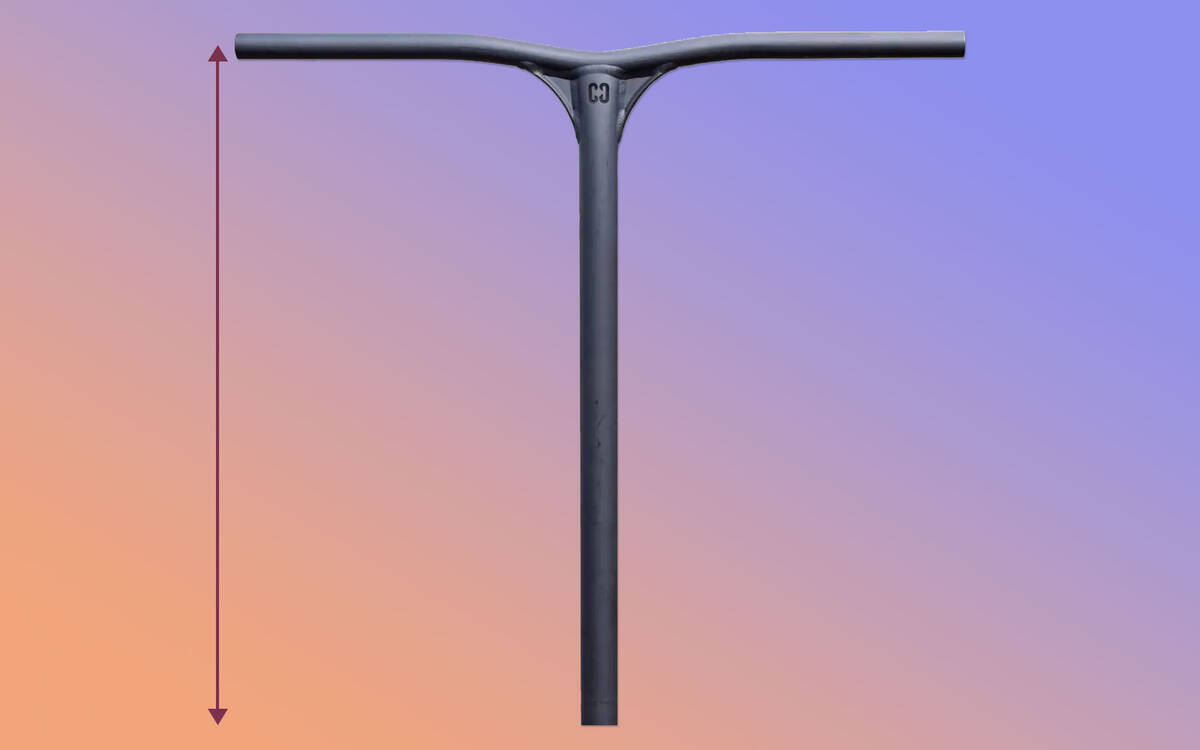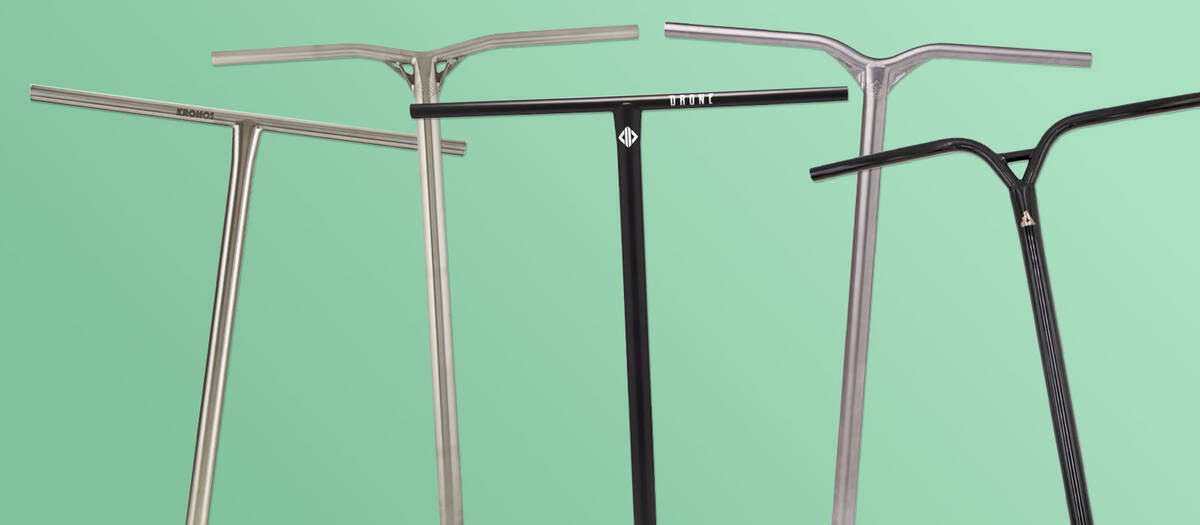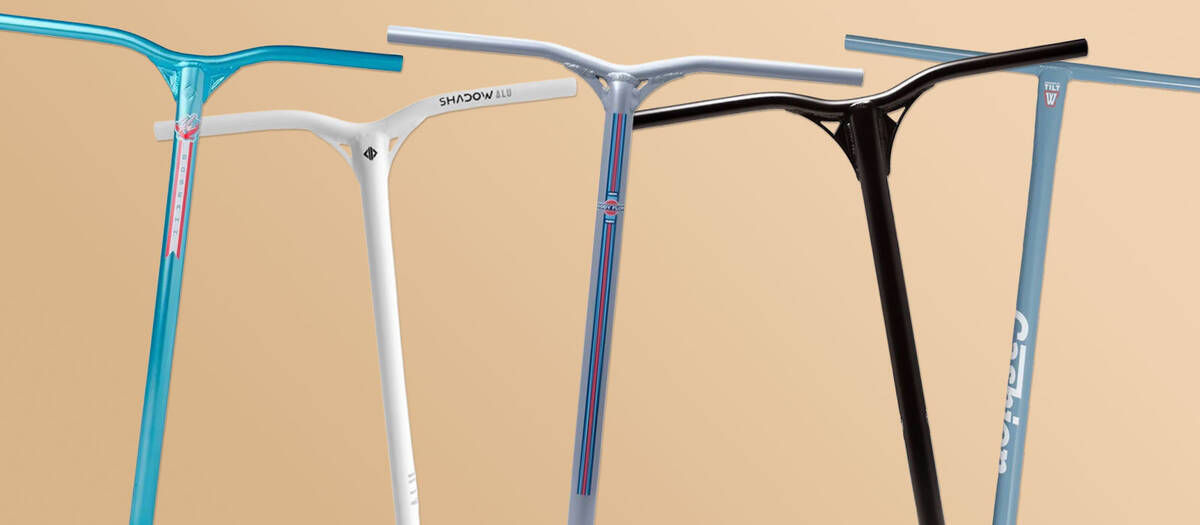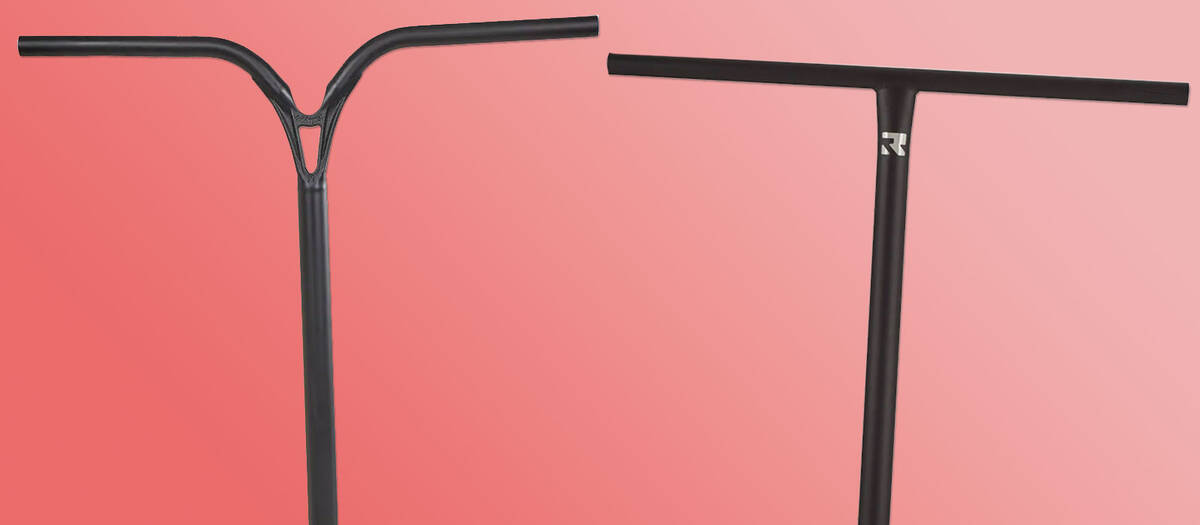Guide to Purchasing Pro Scooter Bars
Welcome to our in-depth purchasing guide for pro scooter bars. We aim to assist you in navigating the extensive variety of choices, making it simpler for you to select the ideal scooter bar.
We'll address any queries you might have before you buy a new pro scooter bar, covering essential points such as bar height, compatibility, and material. Prepare to enhance your scooter with the finest bar available!
Overview
Overview
Finding the Perfect Scooter Bar Height

The height of pro scooter bars significantly influences choosing the appropriate bar. Scooter bar height greatly impacts both riding style and comfort, making it important to pay attention to this aspect when making your choice.
For starters, bar height depends on personal preference. For those new to riding and who haven't yet decided on their preferences, certain suggestions can make the selection of the right bar height simpler.
So, how tall should your scooter bars be? Ideally, pro scooter bars should reach between your hips and navel when you stand on the ground with the scooter deck between your feet. This height ensures comfort and offers optimal leverage for performing tricks. With bars at this height, you can maintain a straight back while retaining ample leverage. If you're a newcomer uncertain between two bar heights within the advisable range, we recommend opting for the taller option as it usually provides better control.
If you're considering adjusting the size of your scooter bars - or if you’re undecided about choosing a taller or shorter bar version - the following table might assist you.
| Aspect | Taller Bars | Shorter Bars |
|---|---|---|
| Comfort | Minimises back strain due to a more upright stance | Necessitates a forward bend, potentially raising back strain |
| Tricks | Enhanced control for grinds and manuals | Improved control for airborne tricks |
| Stability | Greater stability | Increased agility and responsiveness |
| Style | Street (typically) | Park (typically) |
Determining Scooter Bar Height
Product specifications will list scooter bar height, but this measurement alone doesn't reveal the actual height of your scooter once the bar is installed.
To get the accurate total height of your scooter with the new bar, measure from the base of the front wheel to the point where the lower end of the scooter bar will sit once mounted, which relies on your scooter's compression system.
Method for measuring total scooter height:
- SCS: Measure from the bottom of the front wheel to the centre of the clamp. Add this measurement to the bar height to determine the complete scooter bar height.
- HIC/IHC/ICS: Measure from the bottom of the front wheel to the bottom of the clamp. Add this to the bar height to know your scooter’s total height with the new bar.
If you need further information, we are eager to assist. Here are some valuable links:
Choosing the Right Scooter Bar Width

When determining the width of your scooter bar, you should align the width of the bar with your own shoulder width. Measure shoulder to shoulder, then add an inch or two to find a comfortable bar width. Bars too narrow could look odd and may cause discomfort in your wrists and shoulders. Conversely, overly wide bars could limit the tricks you can perform, and having your hands too far apart can also be uncomfortable for your shoulders and wrists.
Weighing up whether to opt for a narrower or wider scooter bar? Consider the following:
- Wider bars: More stability and ease of catch
- Narrower bars: Greater agility and ease in spinning
Scooter Bar Diameter: Standard vs Oversized Bars

Scooter bar diameter is classified as standard or oversized:
- Standard: 32 mm outer diameter / 28 mm inner diameter
- Mix: 35 mm outer diameter / 28 mm inner diameter (most aluminium bars)
- Oversized: 35 mm outer diameter / 32 mm inner diameter
The primary distinction between standard and oversized bars is in their weight and strength attributes. Generally speaking, oversized bars are a bit stronger and heavier, while standard-sized bars are lighter but less robust.
Aluminium bars are somewhat of a wild card because they require additional material for adequate strength during intense riding. Most aluminium bars on the market feature a 35 mm outer diameter with a standard 28 mm inner diameter.
Scooter Bar Compatibility
Choosing a new scooter bar necessitates ensuring it fits with your current setup. To ascertain a bar's compatibility, check the specifications to identify which compression system it supports.
- If you’re using an SCS setup, avoid bars with a slit - an SCS adapter can remove the slit
- A standard size SCS clamp requires a standard outer diameter bar
- If using an oversized SCS clamp with a standard size bar, ensure the correct SCS clamp shim is in place
The table below delineates the compatibility requirements for bars with SCS, HIC, or IHC compression systems. Read the chart left to right to identify your current compression system, check its compatibility with specific bar sizes, and see any necessary requirements, such as needing a slit.
Standard Bars32 mm outer diameter 28 mm inner diameter |
Oversized Bars35 mm outer diameter 32 mm inner diameter |
MIX (Most Aluminium Bars)35 mm outer diameter 28 mm inner diameter |
|
|---|---|---|---|
| SCS Compression
|
Compatible if:
|
Compatible if:
|
Compatible if:
|
| HIC Compression
|
NOT COMPATIBLE |
Compatible if:
|
NOT COMPATIBLE |
| IHC Compression
|
Compatible if:
|
NOT COMPATIBLE |
Compatible if:
|
Should you have an SCS setup and are enamoured with a bar featuring a slit, you can purchase an SCS Sleeve (also referred to as an SCS Bar Adapter) in our Scooter Compression category, although many HIC or IHC bars come with an SCS adapter. Explore them here:
We have several relevant guides concerning pro scooter compression and part compatibility. Locate answers to your queries in these guides:
Titanium Scooter Bars

Titanium bars manage to be as lightweight as aluminium yet as durable as steel, which has made them a favoured option among seasoned scooter riders. The main incentive for buying titanium scooter bars is their incredible strength-to-weight ratio. You need not worry about them breaking during intense riding sessions, and their lightness won't impede your performance.
Titanium is more costly than chromoly or aluminium, and manufacturing titanium bars is resource-intensive due to their remarkable strength and properties. As a result, titanium bars tend to carry a higher price.
Riders new to titanium bars often find the flex surprising. Although getting accustomed to it may take some time, this elasticity can ultimately be beneficial for your riding technique. As you adjust to the flex of titanium bars, you might even see it as an advantage since it absorbs some impact through the bar during heavy landings.
Titanium bars differ from steel or aluminium ones in that when they do eventually fail (after years of heavy use), they snap rather than gradually weakening and bending. If there's any sign of wear on your titanium bars (mainly after years of intensive use), it's recommended to replace them without delay.
Advantages:
- Robust construction
- Lightweight
- Elasticity
Disadvantages:
- Expensive
- Elasticity (may not appeal to all riders)
- Prone to snapping upon breaking
You can filter our bar selection by material to view all titanium bars:
Aluminium Scooter Bars

Aluminium pro scooter bars are celebrated for their reduced weight, making them perfect for riders who value agility and manoeuvrability. This low weight is especially advantageous when performing intricate tricks and aerial manoeuvres. Additionally, aluminium bars sometimes come with a lower price point, making them a budget-conscious choice for those seeking trick-friendly bars.
Nonetheless, aluminium bars are not as strong, posing a drawback due to their higher susceptibility to bending or breaking compared to steel or titanium bars. To compensate for this weakness, aluminium bars usually incorporate reinforcing elements, like gussets or wedges, where bar components are welded, enhancing their strength.
Advantages:
- Lightweight design
- Cost-effective
Disadvantages:
- Weaker durability
- No flexibility
If you wish to browse our range of aluminium bars, filter the category by material:
Chromoly Scooter Bars

Steel pro scooter bars, often called chromoly bars, are renowned for their exceptional strength and cost-effectiveness. Nevertheless, they are comparatively heavier than bars crafted from alternative materials.
In contrast to aluminium bars, which frequently include gussets or Y-shapes for enhanced strength, chromoly bars can be fashioned in authentic T-shapes due to their inherent sturdiness.
Street setups frequently utilise steel bars, even among professional pro scooter riders. Not all riders prioritise ultra-lightweight setups, so whether you're just starting or are a seasoned expert, chromoly pro scooter bars are a dependable option to consider!
To mitigate some of the additional weight, certain chromoly scooter bars incorporate butted tubing. This technique involves using thinner tubing in specific areas, which helps to decrease the overall weight while preserving strength. Chromoly bars are ideal for beginners, and you can find a chromoly bar suitable for every compression system.
Advantages:
- Durable
- Strong
- Affordable
- T-shape
Disadvantages:
- Heavy
Explore our range of scooter bars and filter by material to discover all our chromoly pro scooter bars:
Choosing Between Y-Bars or T-Bars for Pro Scooters

T-bars and Y-bars are named after their unique designs. The ultimate choice between them is largely subjective, as neither is intrinsically better than the other.
T-bars are generally considered a bit less robust, as they lack gussets or braces to enhance the connection between the handlebars and the down tube. Therefore, T-shaped bars are typically made from steel or titanium.
In contrast, Y-bars come with reinforcements that make them somewhat stronger. Consequently, aluminium bars are often created in a Y-shape.
The choice between T-bars and Y-bars is frequently determined by factors such as aesthetics, individual preferences regarding comfort, and alignment with a specific style or identity as a scooter rider. Each type offers distinct benefits and caters to varied rider tastes.
The Role of Backsweep & Upsweep
Backsweep refers to the angle of the handlebar towards the rider, whereas upsweep pertains to the upward angle of the bar. These features critically influence the ergonomics of scooters, providing a more relaxed and natural position for the wrists.
Backsweep and upsweep are commonly associated with Y-shaped bars, while T-shaped pro scooter bars focus on simplicity and a utilitarian design.
Discover our fantastic range of Y- and T-shaped bars:
